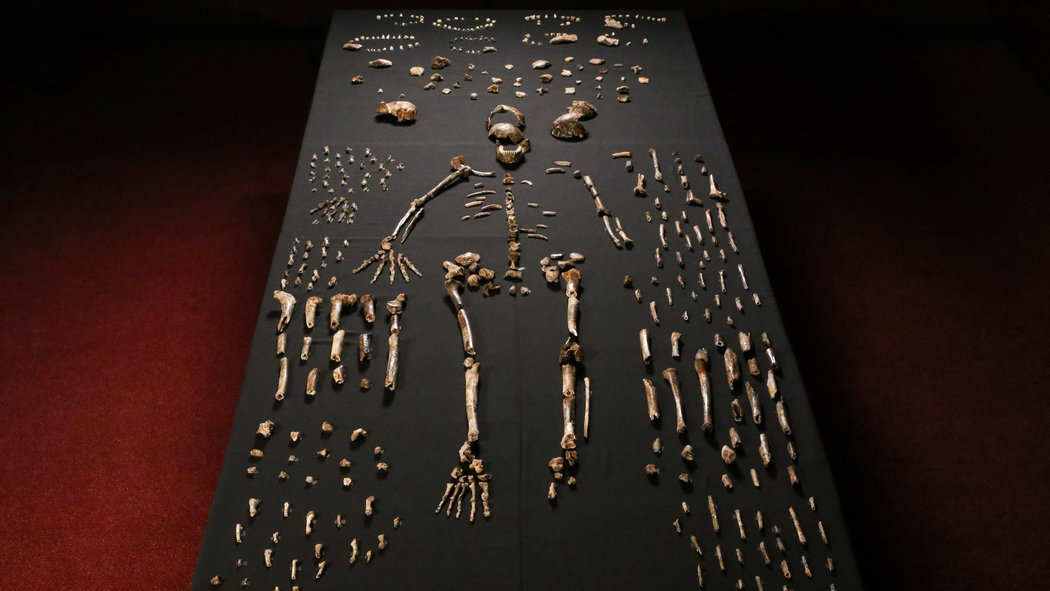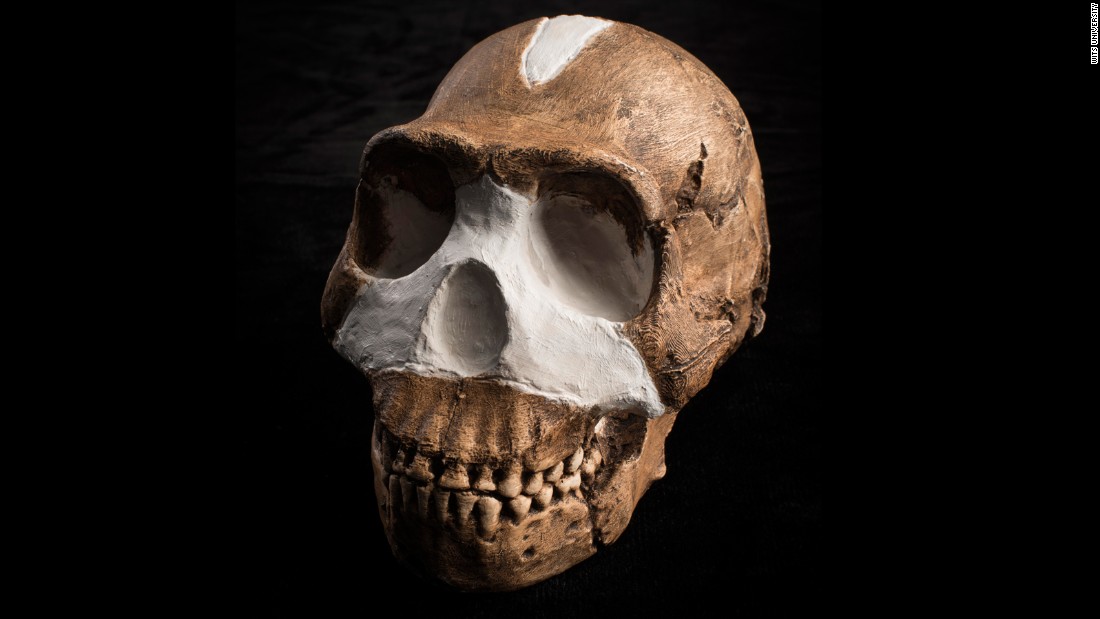On September 10, 2015, scientists unearthed a discovery which would make us reconsider the entire process of human evolution, starting from the very lineage from which we have descended as humans. Within a cave system in the wilderness of South Africa, known as the “Rising Star” cave system, scientists discovered the remains of up to 15 hominids, including teeth, jawlines, a fully-preserved skull, as well as various other skeletal structures like skulls and femurs. These skeletal structures were quite diverse in origin, belonging to males, females, old individuals and even infants. These ancient human ancestors are not just any archeological find, but may have effectively added a baffling new branch to the family tree of humans. The discovery is especially baffling due to the fact that some of the characteristics of this human ancestor are very primitive in nature while others are surprisingly modern in relation to Homo Sapiens. This will essentially make us reconsider the very origins of our species.
This species of hominins has been named as Homo Naledi, where the word naledi means “star” in the Sotho language. It was chosen to correspond to the name of the Dinaledi chamber (“chamber of stars”) of the Rising Star cave system where the fossils were found. Homo naledi was formally described in September 2015 by a 47-member international team of authors led by American and South African paleoanthropologist, Lee Berger of the University of the Witwatersrand, who proposed the bones represent a new Homo species.
Some aspects which make Homo naledi quite different as compared to the other species in the Homo genus include the physical attributes, which tend to point to the fact that H. naledi could have been a crucial transition between two wide schools of ancestry. For instance, the upper part of the body of H. naledi was more inclined towards the primitive side, with aspects such as broad shoulders, curved fingers, and very small craniums, which pointed to the fact that they were adapted for climbing trees and hence, were more inclined towards the Australopithecus school of ancestry. On the other hand, the lower parts of their bodies were strikingly similar to modern-day Homo Sapiens, owing to the fact that their feet and legs closely resembled members from the Homo Genus, which pointed to the fact that they were adept for bi-pedal movement.
Hence, a mixture of Australopithecus characteristics as well as characteristics of the genus Homo in one particular ancestor would essentially point to the fact that this species could have been the very first organism from which modern-day humans evolved. On the other hand, the innately small size of the cranium points to the fact that this species could have been a primitive counterpart during the development of other species within the Homo genus. Either way, the discovery of this species does open the doors for many questions related to the aspect of fundamental human evolution.
Two recreational cavers, Rick Hunter and Steven Tucker, discovered these fossils in the year 2013 when they were exploring unchartered parts of the Rising Star cave system. When the Dinaledi Chamber was first entered, the sediments along the cave floor consisted largely of loosely packed, semi-moist, clay-rich clumps of varying sizes in which bone material was distributed across the surface in almost every area of the chamber, including narrow side passages and offshoots. The highest concentration of bone material was encountered near the Southwest end of the chamber, about 10–12 m downslope from the entry point where the floor levels out.
Tripped Out Fact: The biggest mystery is how did the remains of this species come to be inside such a precarious and uninhabitable cave system. After much speculation, it has been hypothesized that the remains actually belonged to dead members of the species who were placed within the caves as a part of a burial-ritual. This aspect dissolves the paradigms with relation to our primitive ancestors observing ritualistic practices.
 There are many theories regarding how we became humans and homo naledi adds a new chapter to the whole concept of human evolution itself. Since ages, there has been a debate over the topic of the essential crux where our primitive ancestors started evolving into more sophisticated beings. human race. Undoubtedly, the discovery of Homo naledi has opened up the idea that there might have been a transition phase where both our primitive and modern attributes were united in harmony. On the other hand, the discovery of Homo naledi also helped us realize that we know quite less about ourselves and our evolution than we thought we do, which inadvertently opens up numerous avenues of exploration.
There are many theories regarding how we became humans and homo naledi adds a new chapter to the whole concept of human evolution itself. Since ages, there has been a debate over the topic of the essential crux where our primitive ancestors started evolving into more sophisticated beings. human race. Undoubtedly, the discovery of Homo naledi has opened up the idea that there might have been a transition phase where both our primitive and modern attributes were united in harmony. On the other hand, the discovery of Homo naledi also helped us realize that we know quite less about ourselves and our evolution than we thought we do, which inadvertently opens up numerous avenues of exploration.
Further Tripping…
 The Holy Connection An Alternative Exploration of Existence
The Holy Connection An Alternative Exploration of Existence






Nice article and latest news.good job.
Not part of Human species. Man is not a primate. Human species a species among itself. We did not descend from half man half ape or have common ancestry with Primates.
Ivanoff tried to create half man, half primate to get a hybrid super soldier. No offspring. He used In Vitro and bestiality. No Zygote (Fertilized egg)
If we cannot breed with primates now, How can we ever have common ancestry or half man, half ape descendants? Humans are a SEPARATE species. We did not evolve from apes, or monkeys…
“The Ancestor that Evolution Forgot: Homo naledi”. Thanks a lot for this beautiful overview, but your title is wrong at 3 points: naledi was no ancestor of ours (probably more related to bonobos than to hmans, see below), it was not forgotten but predicted (google “aquarboreal), and it was not Homo, but rather Australopithecus. Berger & team did a fantastic job in excating & publishing etc., but their interpretations were unscientific, far-fetched, unnecessary & anthropocentric (just so): there was no deliberate burial as Berger believed, they were no distance-runners & no tool-makers. It was obviously a completely natural fossilisation of swamp-dwelling Pliocene apes. Naledi was found in mud-stone = stagnant water (prof.Dirks), its curved hand-bones = vertical climbing (in the branches above the swamp cf. google “gorilla wading” illustrations), and its flat humanlike feet were not evolved into the human (Homo) direction, but were primitive for all African hominids (Gorilla, australopiths, Pan, Homo etc.): prenatal chimps have feet resembling ours, with forward pointing big-toes (C.S.Coon): “only as it approaches its birth does its foot acquire the appearance of a hand”, IOW, gorillas & chimps had more bipedal (i.e. wading) ancestors, with naledi-like feet, totally different from cursorial bipeds (ostrich) but more remisniscent of swimming bipeds (e.g. google “penguin foot”). Generally (except e.g. the humanlike feet), naledi was bonobo- and/or australopith-like: they lived like bonobos wading bipedally in swamp forest for surface foods (waterlilies, papyrus etc.) but much more frequently (google “bonobo wading”). They died where they lived, their bodies got almost immediately covered with mud, and the mudstone eroded into the caves (with an average velocity of a few cms / 1000 years). It was probably an early member of the South-African australopiths, closely related to A.africanus, sediba & robustus (google “researchGate marc verhaegen”).